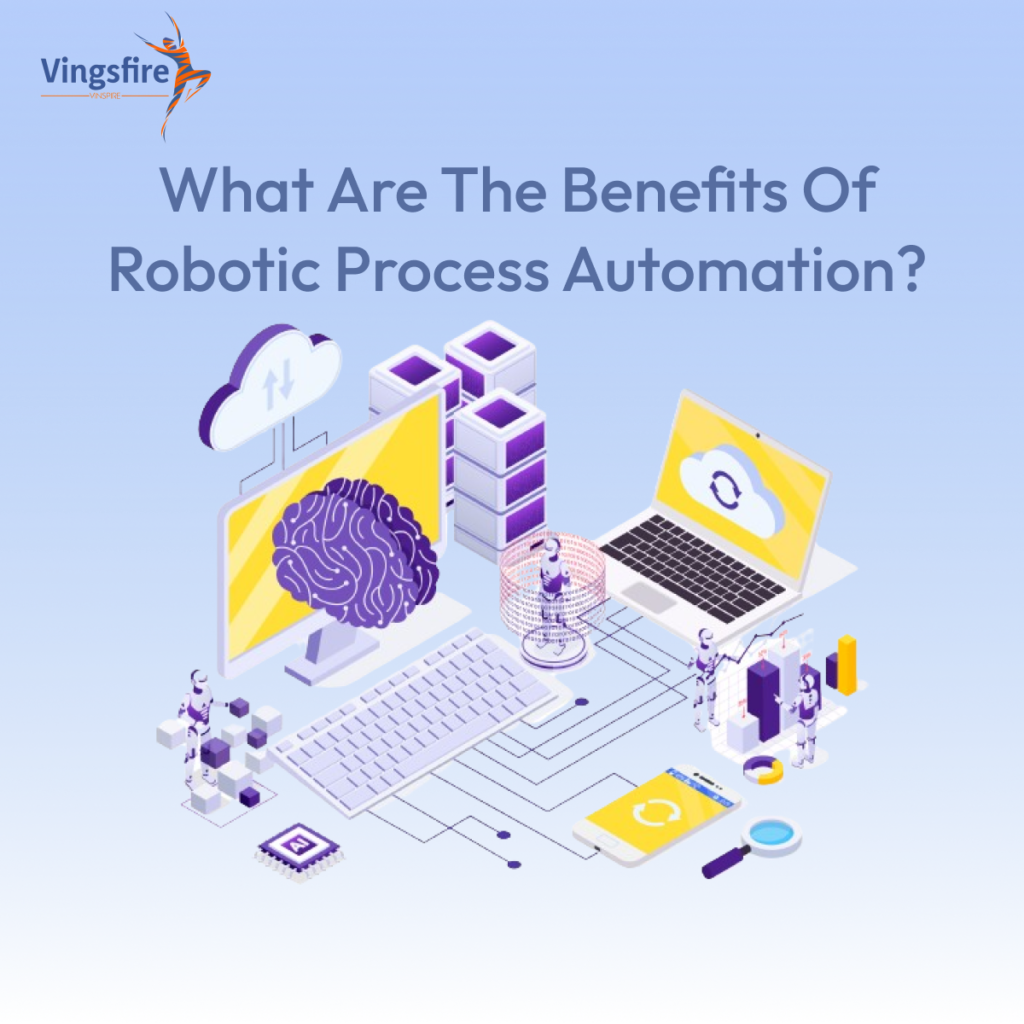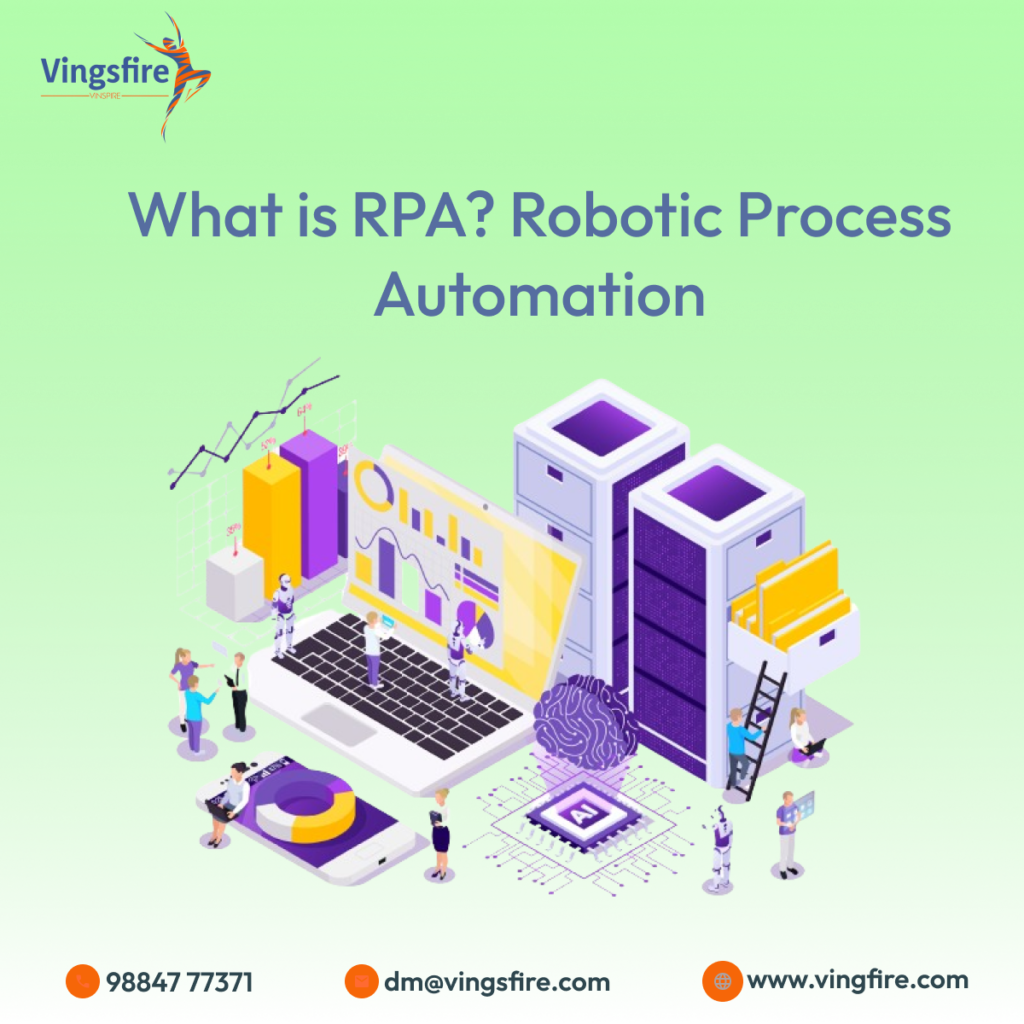Learn More About Vingsfire :
Introduction
In the ever-evolving landscape of technology, businesses are constantly seeking innovative solutions to streamline their operations, enhance efficiency, and stay ahead of the competition. One such groundbreaking technology that has gained significant traction in recent years is Robotic Process Automation (RPA). RPA involves the use of software robots or “bots” to automate repetitive, rule-based tasks, freeing up human resources for more strategic and creative endeavors. In this blog post, we will delve into the top 10 benefits of RPA, exploring how this transformative technology is revolutionizing the way businesses operate.
1.Enhanced Efficiency and Accuracy (rpa-robotic)
At the core of RPA lies its ability to perform tasks with unparalleled speed and precision. Unlike humans, robots do not succumb to fatigue or distractions, enabling them to tirelessly execute repetitive processes 24/7 without compromising accuracy. This results in a significant reduction in errors and enhances overall operational efficiency, leading to improved productivity across various business functions.
2.Cost Savings
Implementing RPA can yield substantial cost savings for businesses. By automating routine and time-consuming tasks, organizations can reduce the need for manual intervention, thereby cutting down on labor costs. Moreover, RPA eliminates the risk of errors that may result in costly rework or fines. Over time, the investment in RPA technology proves to be a cost-effective solution that delivers long-term financial benefits.
3.Increased Productivity
With RPA handling mundane and repetitive tasks, human employees can redirect their focus towards more complex and value-added activities. This shift not only boosts individual productivity but also enhances the overall efficiency of the entire workforce. Employees can engage in tasks that require critical thinking, creativity, and problem-solving, contributing to a more dynamic and agile work environment.
4.Rapid Implementation
One of the key advantages of RPA is its quick implementation process. Unlike traditional IT solutions, RPA does not necessitate extensive coding or system overhauls. Bots can be deployed swiftly to mimic human actions within existing systems, enabling organizations to realize immediate benefits. This rapid implementation contributes to a faster return on investment (ROI) and allows businesses to adapt quickly to changing market demands.
5.Improved Customer Experience
In today’s hyper-competitive business landscape, providing an exceptional customer experience is paramount. RPA plays a crucial role in this regard by automating customer-facing processes such as order processing, query resolution, and invoicing. The speed and accuracy of RPA-driven systems result in faster response times and reduced errors, leading to heightened customer satisfaction and loyalty.
6.Enhanced Compliance and Risk Management
Compliance with regulations and risk management are integral aspects of business operations, especially in industries with stringent governance requirements. RPA ensures that processes are executed consistently and in accordance with predefined rules, minimizing the risk of non-compliance. Additionally, RPA systems maintain detailed logs of activities, providing a transparent audit trail that facilitates regulatory compliance and risk assessment.
7.Scalability and Flexibility
RPA systems are inherently scalable, allowing businesses to easily adapt to changing workloads and operational demands. Whether an organization experiences rapid growth or faces a temporary surge in tasks, RPA can efficiently scale up or down to meet the evolving requirements. This flexibility enables businesses to respond agilely to market dynamics and maintain a competitive edge.
8.Data Accuracy and Quality
Data is the lifeblood of modern businesses, and ensuring its accuracy and quality is paramount. RPA eliminates the risk of human errors associated with manual data entry, ensuring that information is consistently accurate and up-to-date. This, in turn, enhances the reliability of decision-making processes and contributes to the overall improvement of data-driven insights.
9.Employee Empowerment (rpa-robotic)
Contrary to concerns about job displacement, RPA is designed to complement human capabilities rather than replace them. By automating routine tasks, RPA empowers employees to focus on activities that require creativity, critical thinking, and emotional intelligence. This not only enhances job satisfaction but also creates opportunities for upskilling and career advancement within the organization.
10.Competitive Advantage (rpa-robotic)
In a business landscape where agility and innovation are key differentiators, adopting RPA provides organizations with a significant competitive advantage. The ability to automate processes, adapt quickly to market changes, and deliver enhanced customer experiences positions businesses as industry leaders. As more companies embrace RPA, it becomes a strategic imperative for those aiming to stay ahead in a rapidly evolving digital era.
Conclusion
The adoption of Robotic Process Automation (RPA) represents a paradigm shift in the way businesses operate, unlocking a myriad of benefits that extend beyond operational efficiency. From cost savings and increased productivity to improved customer experiences and enhanced compliance, RPA is reshaping industries across the globe. As organizations continue to navigate the complexities of the modern business landscape, embracing RPA becomes not only a technological choice but a strategic imperative for sustainable growth and competitiveness.






